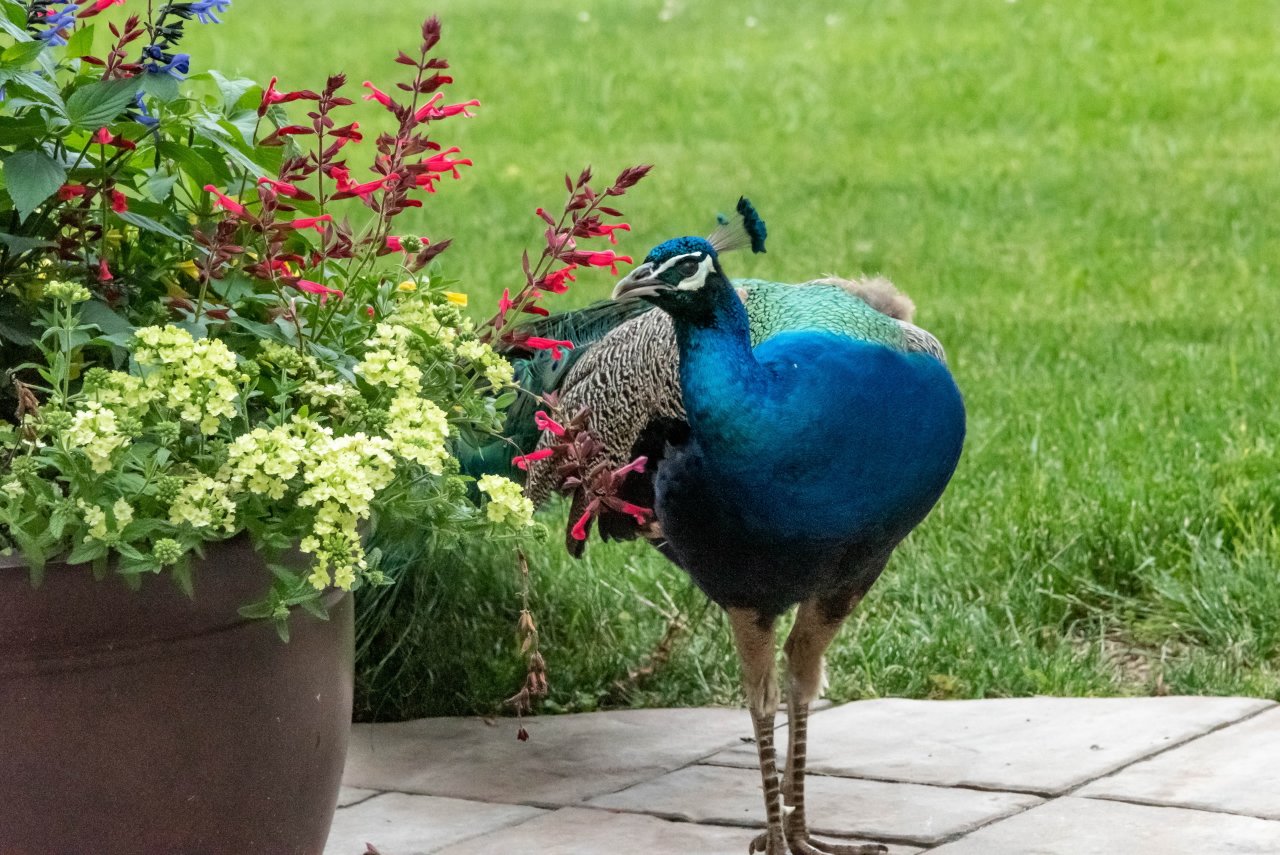Wood Thrush
Recently a Hart Beat reader and good friend from Vero Beach sent me a couple of photos of a bird in her yard hoping that it was a Wood Thrush (top), but not sure whether it was a Brown Thrasher (photo 2) instead. The two can appear remarkably similar superficially but are readily distinguishable when one knows what to look for. My friend’s photos were clearly of a Brown Thrasher.
Brown Thrashers are members of the Mimidae genre of birds commonly known as mimic thrushes for they can sing like true thrushes. While their songs can be somewhat like true thrush songs, to my mind they are not nearly as beautiful as that of the Wood Thrush. In addition to the Brown Thrasher, other eastern mimic thrushes are the Gray Catbird (photo 3) and the Northern Mockingbird (photo 4).
All three sing incessantly with the Mockingbird having the most varied call which seems to just go on and on imitating a vast number of other bird species occasionally even at night. The Brown Thrasher sings a varied call as well but is different from the Northern Mockingbird in that it repeats its phrases twice with each double phrase different from the previous one. The Gray Catbird is so named because it often has calls much like a cat meowing.
Conversely, the Wood Thrush has a more melodious song and is a delight to hear singing in our woods in the early evening. The Hermit Thrush (photo 5) although uncommon, is the only brown thrush species, with its reddish tail, that is likely to be found in Florida in the winter.
The most common true thrushes are the American Robin (photo 6) and the Eastern Bluebird (photo 7). While their songs are not quite as melodious as the Wood Thrush, they are quite beautiful and can go on and on at times, particularly when trying to attract a mate.
While Wood Thrushes and Brown Thrashers have some similarity, none of the thrushes have wing bars, as the Thrasher has, nor the longer tail or curved bill. Finally, the Brown Thrasher has a distinctive yellow eye. The other two eastern mimic thrushes, Gray Catbird and Northern Mockingbird, both are shades of gray whereas there aren’t any true eastern thrushes colored gray. While none of the bird books I am familiar with mention this, it seems to me that the mimic thrushes are all horizontal birds always seeming to be in a bent over posture, whereas the true thrushes are all vertical birds always seeming to be standing up straight.
On our Pennsylvania farm we are fortunate to have all the birds mentioned here coming to our feeders or in our yard all summer except for the Hermit Thrush which is primarily a winter visitor both in Pennsylvania and Florida. All these species particularly love the meal worms we put out for them as you can see in the Brown Thrasher photo. Catbirds love the grape jelly we put out for the orioles.
Mimic thrushes are so named because of their ability to imitate the songs of other bird species. Many humans try to imitate other members of their species as well but go much further in their efforts than merely imitating their favorite singers, although there are comedians making a good living doing exactly that. Teenagers love to dress like their favorite actresses. Young ball players pretend to be their favorite star; many youngsters follow in the footsteps of their parents, and sometimes adults, often without realizing it, do just what their neighbors are doing.
On the national and international level many politicians pretend to be actual leaders, and occasionally one will even advance to becoming a dictator because he has fooled a great many people. Adolf Hitler succeeded in his efforts because his followers thought he was imitating someone doing a good job for his country. Thankfully, mimic thrushes only imitate other birds’ songs and not the habit that other species have of dropping their whitewash on our vehicle windshields. Seems some politicians drop their whitewash too. If only we could duck out of the way.
For more on mimic thrushes, click here.
For more on the true thrushes of Florida, click here.





























